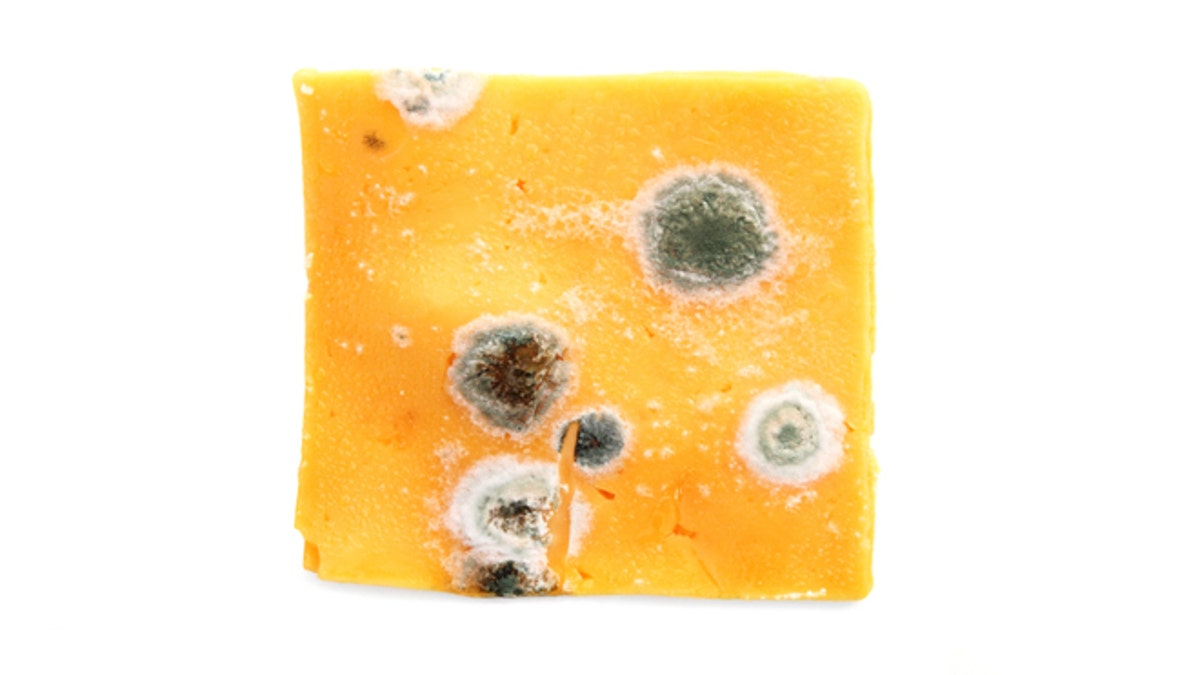
Cheddar cheese isn't meant to be aged. (iStock)
It's the question you ask when you've rooted through the refrigerator and found a carton of strawberries, a few of which have grown a fur coat. It's the thought that runs through your mind when your kids are starving, you've uncapped some yogurt, and you see a few spots of green.
Too moldy?
Most dads of the world will say "It's fine! Just a little mold! Cut it off and eat it already!"
Germaphobes, on the other hand, will counter with a warning: "In the trash. Now."
For the first installment of Is This Too Moldy?, we went to a more reliable and reasonable source: Dr. Hassan Gourama, Associate Professor of Food Science at Penn State University.
So, Dr. Gourama—are these foods too moldy?
Onions
"Basically you shouldn’t be eating food with mold on it," Dr. Gourama warns. But there are some situations where mold can safely be cut off and the remaining food saved. "It depends on the texture," Dr. Gourama says. Onions being hard textured, they fall into the salvageable camp. "If it’s only a few spores of the mold, you can remove the moldy layers, then wash the onion very well."
Cheddar Cheese
Dr. Gourama has stern warnings about mold and "soft cheese, yogurt, anything that is soft." With these foods, even if "you remove the surface contamination, if the mold is producing any toxic chemcial, it can easily diffuse into the product, and the mold will not be visible." This is why any soft food that has visible mold on it should be thrown away—even the parts that don't appear moldy at all.

Moulded lemons in strainer on white background (Westend61 / Dieter Heinemann)
But where does cheese fall on the texture scale? Goat cheese is definitely soft. Parmesan is definitely hard. But cheddar? "Hard," says Dr. Gourama. "You can cut the mold off of cheddar with a clean knife, as long as you cut one inch under the mold."
Citrus Fruit
Okay, we probably didn't need a doctor's opinion on this one.
But it gave us an opportunity to talk citrus mold in general with Dr. Gourama. If a lemon or orange shows "only small amounts of mold on the peel, and it looks like it’s just on the surface," you might try removing the mold with a clean cloth dipped in hot water or vinegar. ("Vinegar is a very good antifungal product," Dr. Gourama says.) You'd then peel the citrus and, if there was no sign of mold on the flesh, proceed. However, any sign of mold on the flesh should be taken seriously. Dr. Gourama would "throw it away."
More from Epicurious
20 Must-Try Ways to Pair Items You Already Have In Your Pantry
The 57 Best Cooking Tips of All Time
12 Lightning-Fast Chicken Dinners to Make Now
This Recipe For Boiling Water Has 908 Comments
These Addictive, Amazing 22-Minute Meals Will Change Weeknight Dinner
